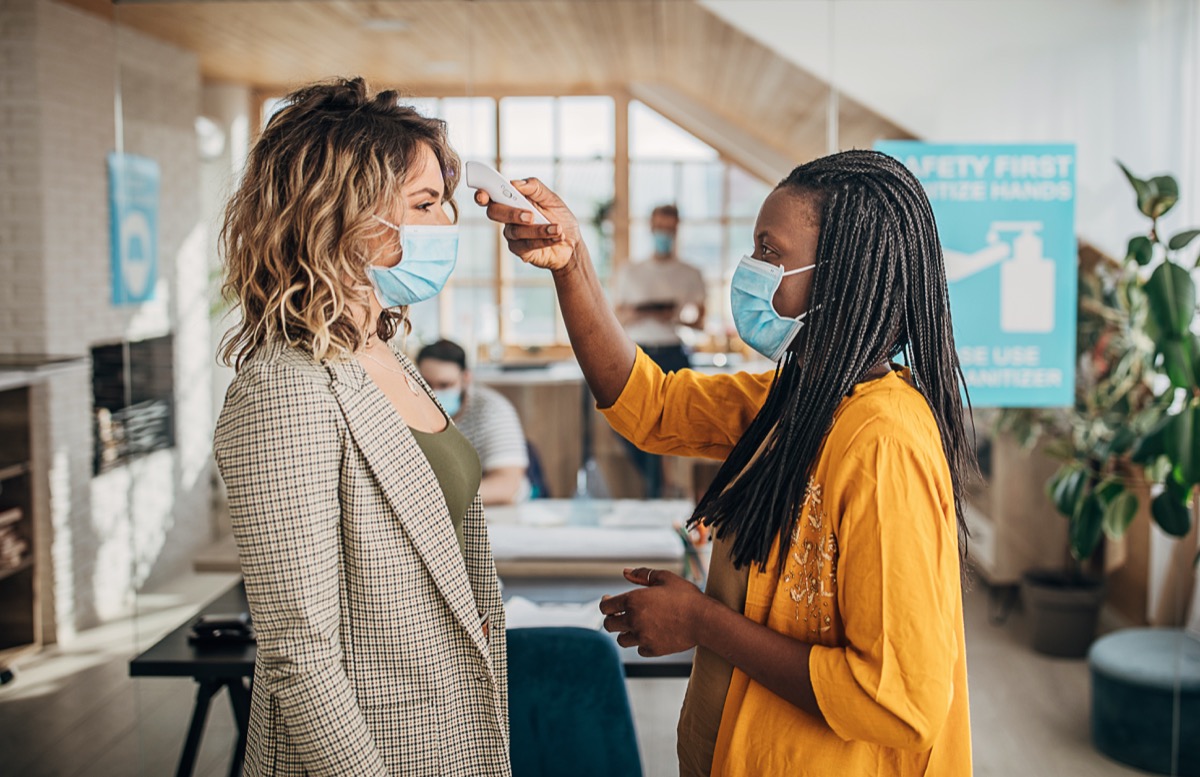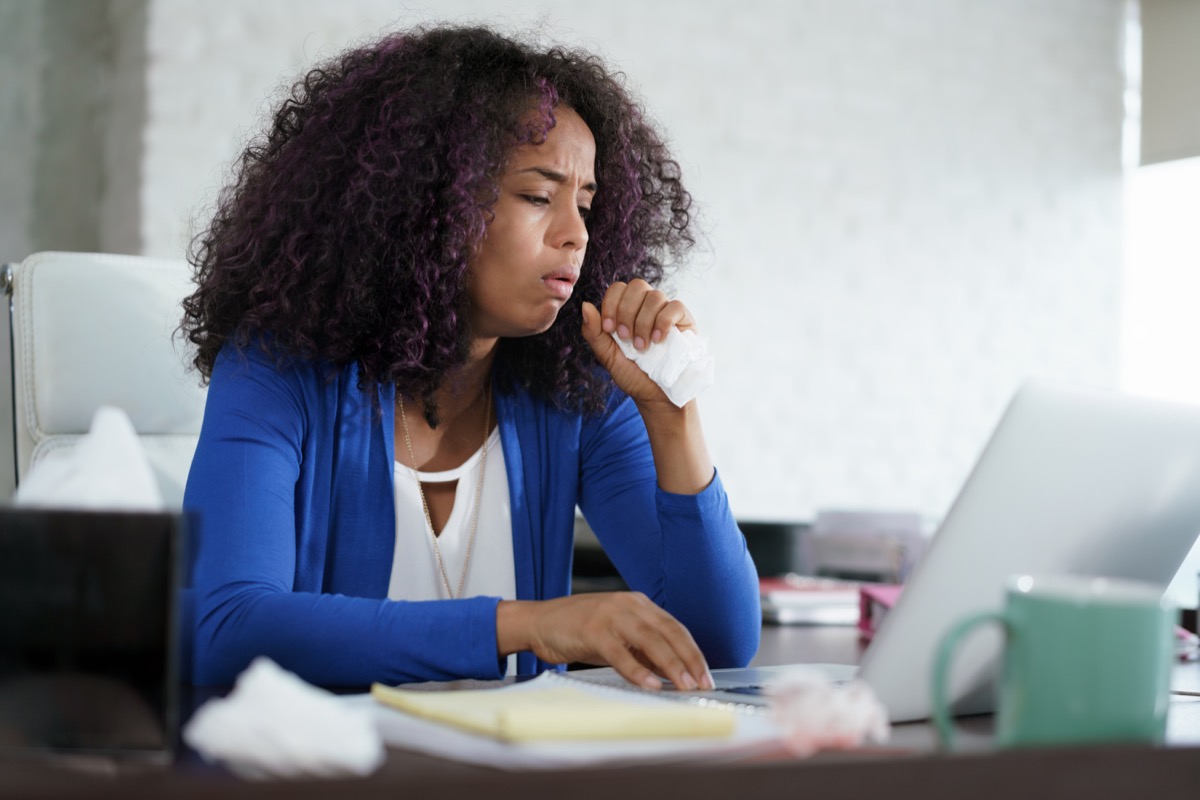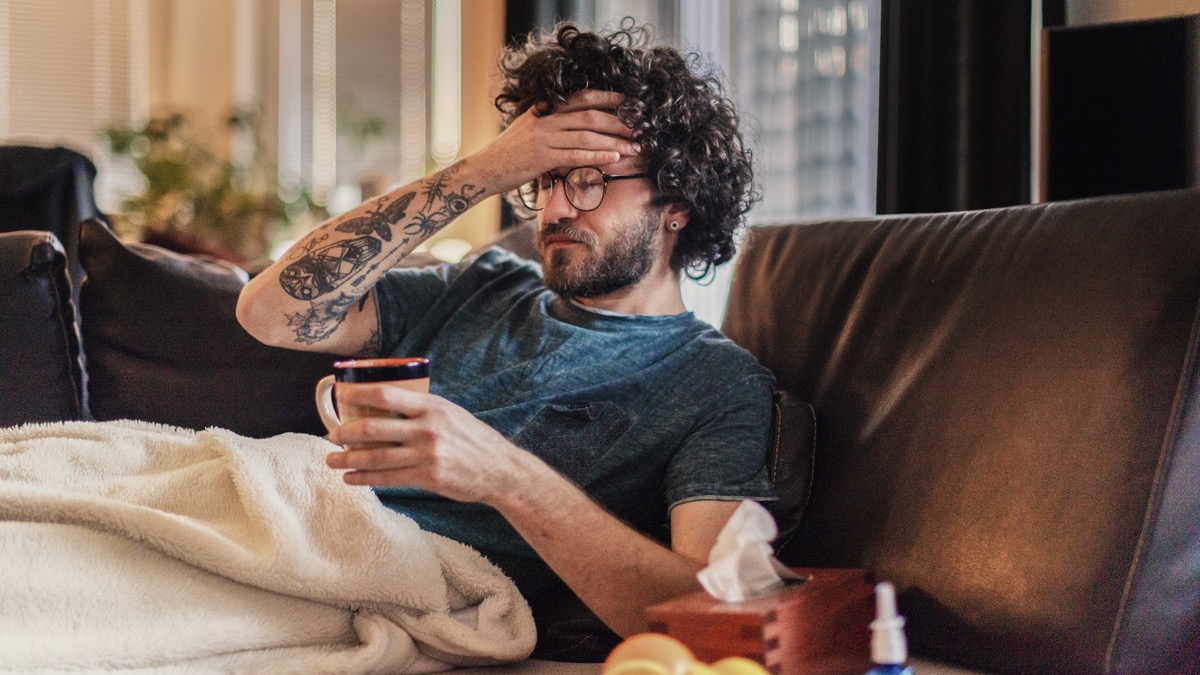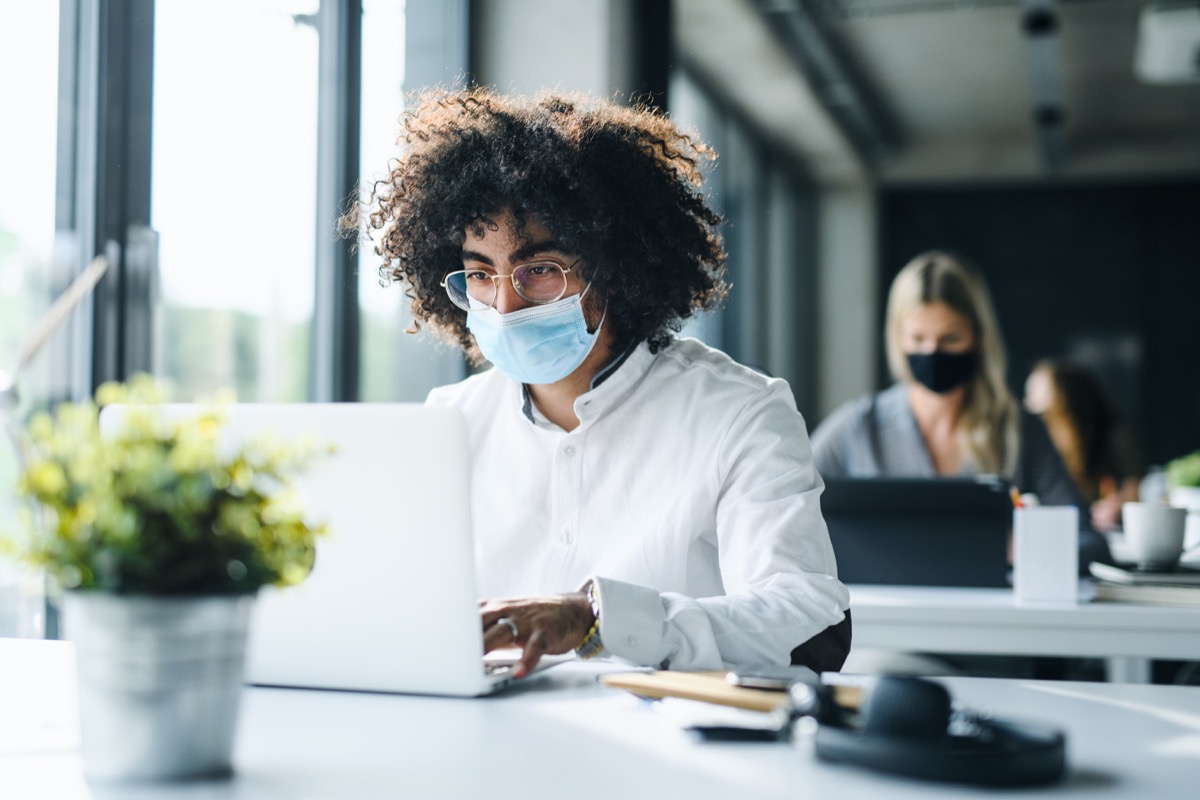A study published in the Health Affairs journal on Oct. 15 found that states where workers could get up to two weeks of paid sick leave displayed 417 fewer coronavirus cases per day. This accounts for an average of at least one prevented case every day per 1,300 workers. And for more on working during COVID, You’re Up to 11 Times More Likely to Get COVID If You Work Here, Study Says. The absence of universal paid sick leave is especially troubling during a pandemic. After all, a 2016 Health Affairs study found that workers without paid sick leave are less likely to take time off for illness than those with paid sick leave. And this idea has already been researched in regards to the flu. A 2017 study published in the Journal of Public Economics concluded that population-level flu rates actually decreased when the amount of workers granted paid sick leave increased. This is because without paid sick leave workers are likely to engage in “contagious presenteeism” behavior, where they will still go to work even with a contagious disease. And to make sure you’re not coming to work when you’re ill, If Your Food Tastes Like These 2 Things, You May Have COVID.ae0fcc31ae342fd3a1346ebb1f342fcb Before the pandemic, more than 25 percent of all American employees did not have the option to take paid sick leave. This makes the United States one of the only Organization for Economic Cooperation and Development (OECD) countries that doesn’t guarantee universal access to paid sick leave for all employed workers. Only 12 states and Washington D.C. had implemented state-level sick pay mandates before the pandemic: Connecticut, California, Massachusetts, Oregon, Vermont, Arizona, Washington, Rhode Island, Maryland, New Jersey, Michigan, and Nevada. And if you are sick with COVID, find out When Can You Go Back to Work if You’ve Had the Coronavirus. This year, the Families First Coronavirus Response Act (FFCRA) created an emergency sick leave provision to allow two weeks of emergency paid sick leave for many workers during the pandemic. It was made effective on April 1, and according to the researchers, this provision is estimated to have provided paid sick leave benefits to roughly half of American workers. “Granting access to paid sick leave has helped to flatten the curve, in line with previous research and theoretical considerations,” the study authors noted. And to make sure you’re staying safe, The CDC Now Says You Should Wear Your Mask in These 7 Places. While the law began April 1, it currently only extends through Dec. 31 of this year. That means half of the American workforce could go back to not having paid sick leave, which worries researchers—especially since there has been no indication that coronavirus spread will be eliminated by the beginning of 2021. “Although our findings suggest that the U.S. emergency sick leave provision was a highly effective policy tool to flatten the curve in the short-run, it only contains up to two weeks of paid sick leave and is set to expire at the end of 2020,” the study authors noted. And for more up-to-date information, sign up for our daily newsletter.




